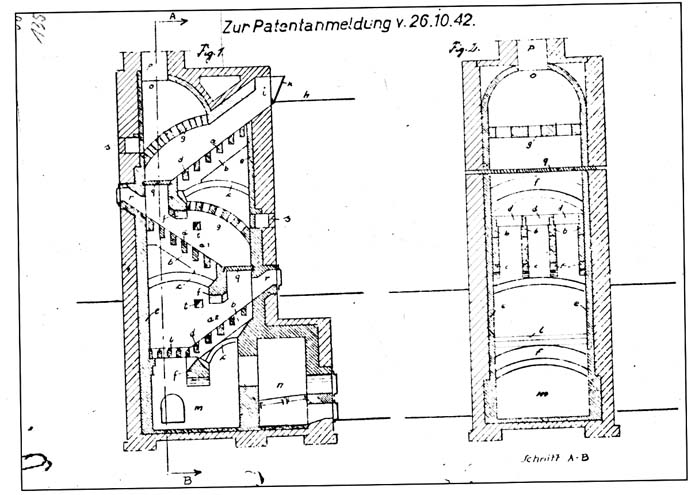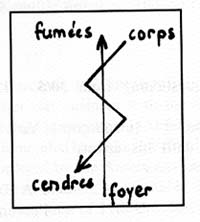

Sander filed his patent application for a continuous cremation furnace in response to the particular situation obtaining in the East: the creation of big assembly camps connected with the destruction and dislocation caused by the war. High death rates were to be expected and the burial of the corpses of people dying from infectious diseases represented a health hazard, while individual cremation was impossible due to a lack of human and material resources. The solution was therefore a mass cremation furnace, contrary to the law, but made necessary by the circumstances.
In order to make a continuous cremation furnace the first idea that comes to mind is based on the production line principle: the corpses are put on a conveyor, pass through a cremation furnace and emerge as ashes at the other end. But such a system would require moving parts operating under harsh conditions, thus subject to rapid deterioration. The advantage of Sander’s design is that everything takes place INSIDE the furnace itself. The firebox is at the bottom. The corpses are introduced at the top, one at a time, and slowly slide down three inclined refractory grids under their own weight, arriving at the bottom as ashes. No moving parts, subject to wear, for it is the corpses themselves that move. On Figure I, corpses are introduced at i, and slide down inclined grids a, a1 and a2, gradually being consumed by the fire of the firebox n. The ashes are collected in m and the smoke is evacuated through p.
This patent application, which is very generalized, concerning only the principle of continuous cremation, may be summarized as follows:
The dimensions of the furnace are lacking, but it may be estimated as being about 2 m wide, 2.5 m deep at the top and 3 m at the base and 6 m high. If this furnace had ever been built, there would have been serious problems with the refractory slides q, which could be used to stop corpses from descending, and the inadequate number of inspection and intervention apertures for dealing with blockages. The scheme was never put into practice, one possible reason being that such a furnace would have been in direct competition with the creations of Prüfer, Sander’s superior.

Translation of inscriptions on the sketch in the French text:
- fumes / smoke
- corps / corpses
- cendres / ashes
- foyer / firebox
